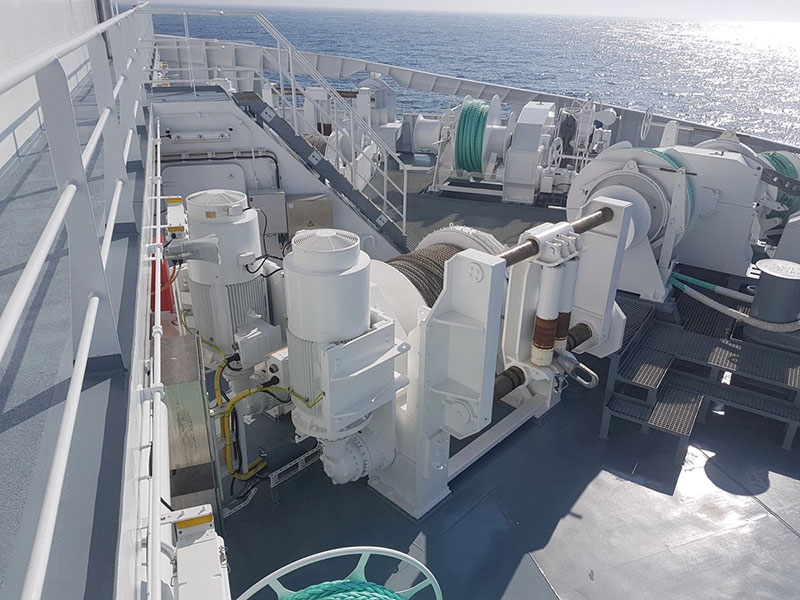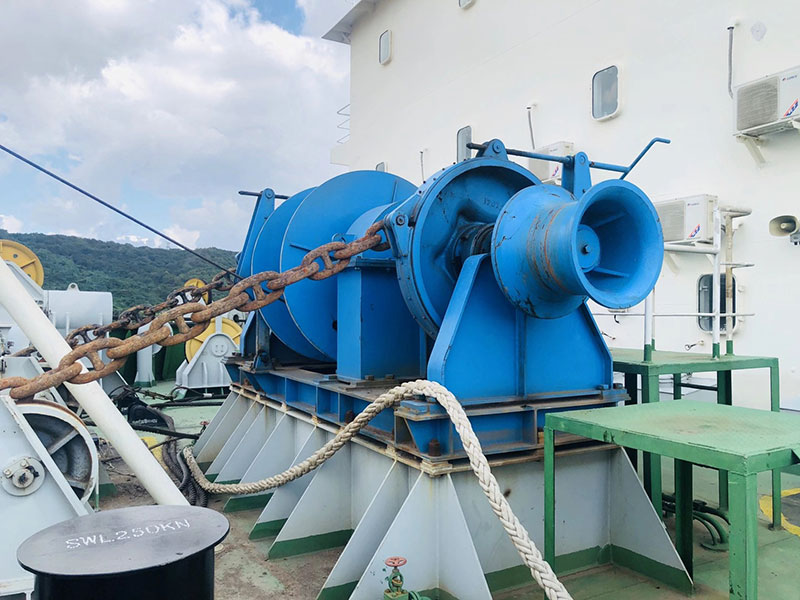Deck winches are essential equipment used in various industries, including marine, offshore, and construction. These robust devices play a vital role in facilitating the safe and efficient movement of heavy loads on decks, ensuring smooth operations and minimizing manual labor. However, the installation and testing of deck winches require careful attention to detail to ensure optimal performance and safety. In this article, we will discuss the crucial steps involved in deck winch installation and test procedures.

Planning and Preparation:
Before installing a deck winch, thorough planning and preparation are essential. Start by assessing the location and purpose of the winch installation. Determine the load capacity requirements, winch type, and power source. Additionally, consider any environmental factors, such as exposure to saltwater or extreme temperatures. Review the manufacturer’s guidelines and relevant safety regulations to ensure compliance throughout the installation process.
Mounting and Structural Considerations:
Ensure that the deck or foundation structure can withstand the winch’s weight, pulling force, and vibrations. Consult a structural engineer if necessary. Accurately position the winch and mark the mounting holes. Use appropriate mounting hardware, such as bolts, to secure the winch firmly. Double-check the alignment and levelness to avoid any stress concentration or misalignment issues.
Electrical Connections:
If the deck winch is electrically powered, connect it to a reliable power source. Follow electrical codes and regulations to ensure proper wiring and grounding. Consult an electrician or an expert in electrical installations to avoid any potential hazards. Inspect and test the electrical connections to ensure they are secure and free from any loose wires or corrosion.

Mechanical Installation:
Once the marine winch is mounted and the electrical connections are in place, focus on the mechanical installation. This involves attaching the winch drum or spool, cables or ropes, and any other necessary components. Follow the manufacturer’s instructions carefully, ensuring that all parts are securely fastened. Pay close attention to proper alignment and tensioning of cables or ropes to prevent slippage or premature wear.
Safety Features and Devices:
Deck winches should be equipped with appropriate safety features and devices to prevent accidents and protect personnel. Common safety components include emergency stop buttons, limit switches, overload protection mechanisms, and fail-safe braking systems. Test these safety features to ensure they are functioning correctly and promptly respond to emergencies.
Load Testing and Performance Evaluation:
After the installation is complete, it is crucial to conduct load testing and performance evaluation. Load testing involves subjecting the winch to its maximum rated capacity to verify its performance under stress. Monitor the winch’s response, including speed, load handling, and power consumption, to ensure it operates within acceptable limits.
Operational and Functional Testing:
In addition to load testing, perform operational and functional testing to assess the winch’s overall functionality. Check for smooth operation, proper spooling of cables or ropes, and any abnormal noises or vibrations. Evaluate the control mechanisms, such as switches and levers, to ensure they operate smoothly and reliably.
Documentation and Maintenance:
Throughout the installation and testing process, maintain detailed documentation of each step, including photographs, diagrams, and written records. This documentation will serve as a reference for future maintenance and troubleshooting purposes. Create a maintenance schedule that includes regular inspections, lubrication, and any necessary repairs to keep the deck mooring winch in optimal working condition.
Conclusion:
The installation and testing of deck winches are critical for ensuring efficient and reliable operations in various industries. By following proper procedures and guidelines, you can minimize the risk of accidents, extend the winch’s lifespan, and optimize its performance. Thorough planning, precise installation, and comprehensive testing are essential for achieving a safe and functional deck winch installation.
In conclusion, the installation and testing of deck winches require meticulous attention to detail and adherence to manufacturer guidelines and safety regulations. By carefully planning and preparing, ensuring proper mounting and structural considerations, making secure electrical connections, and conducting thorough mechanical installation, you can set the foundation for a reliable and efficient marine deck winch.
Additionally, incorporating appropriate safety features, conducting load testing, and evaluating operational and functional performance will further enhance the winch’s reliability and safety. It is vital to document each step of the installation and testing process for future reference and to establish a maintenance schedule to keep the winch in optimal condition. By following these procedures, you can ensure the smooth and successful operation of boat deck winches, facilitating efficient and safe load movement on decks in various industries.